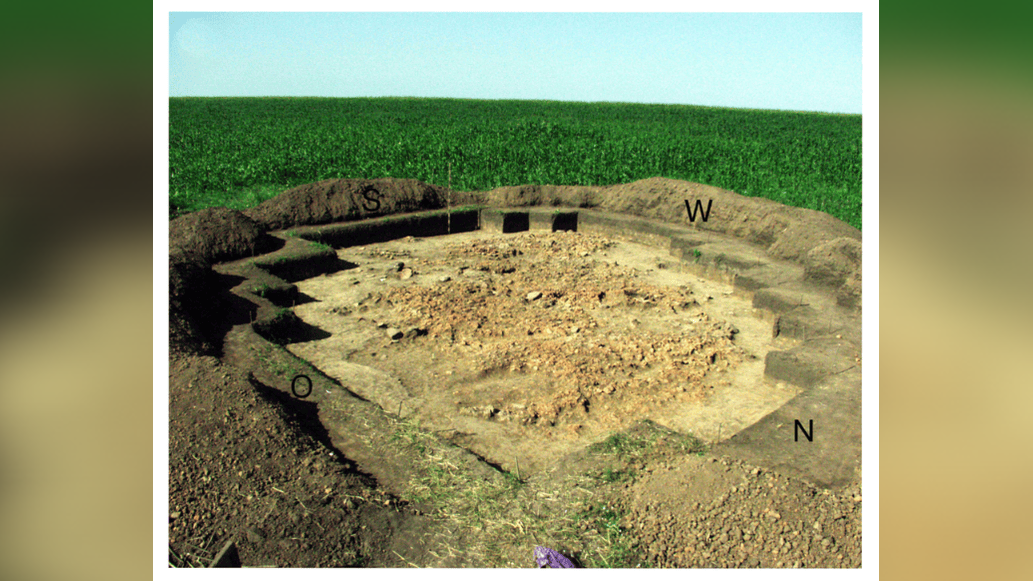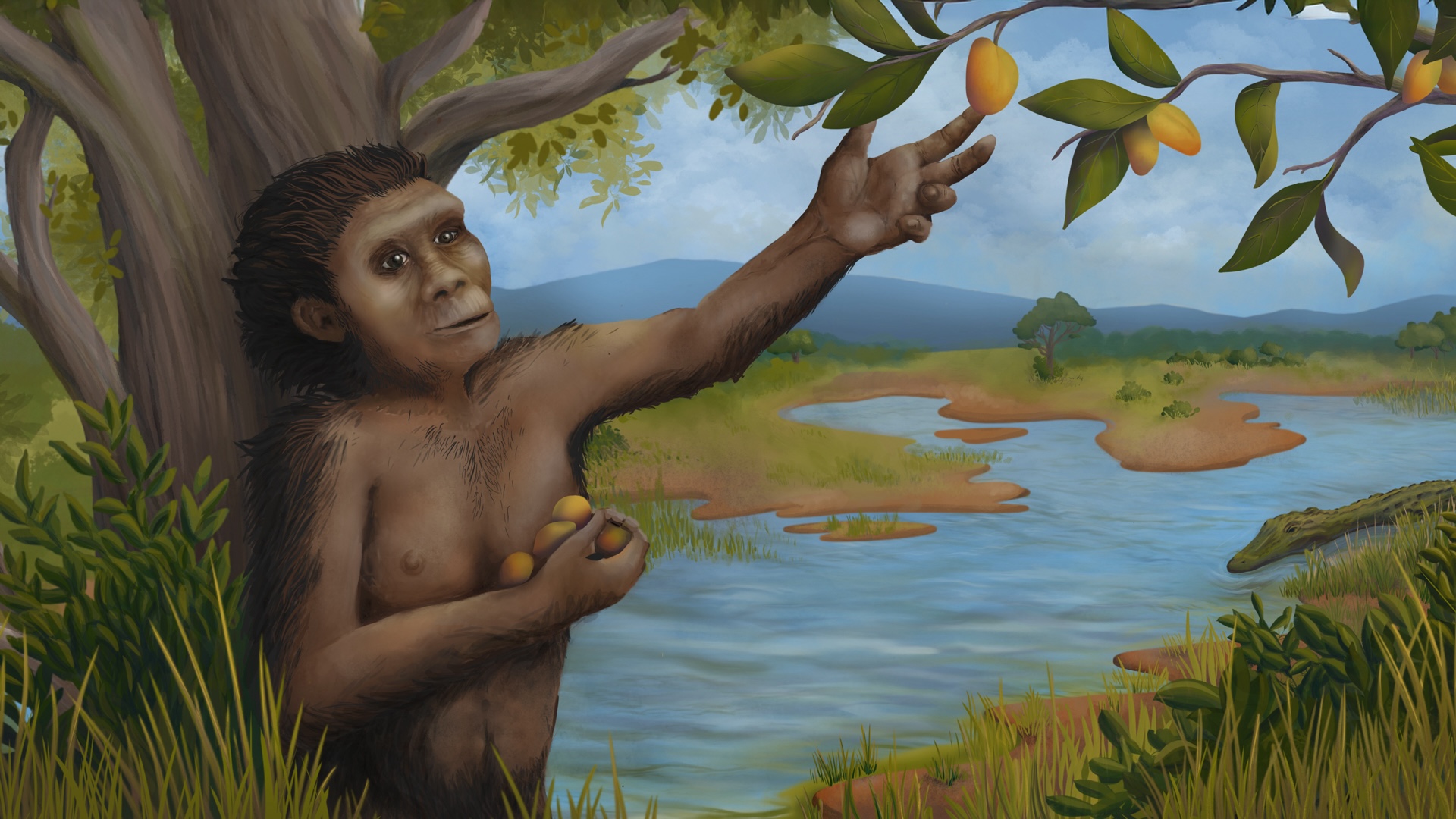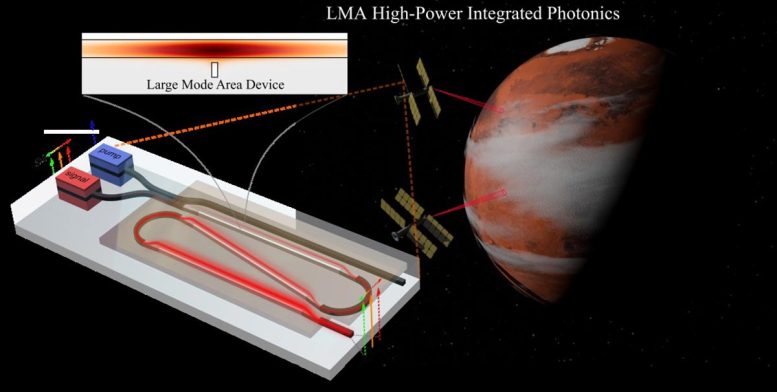In this week’s science news, we take a journey to the past, as far back as our very earliest human ancestors. First stop, ancient Egypt, where archaeologists working at a temple in Taposiris Magna have discovered what they believe is a bust of Queen Cleopatra VII, famed for her romances with Roman leaders Julius Caesar and Mark Antony. While not everyone is convinced, coins depicting the late queen’s head were also found at the site, supporting a connection with the ancient ruler.
But this is not the only tantalizing treasure that’s been revealed this week. Going further back, imagine how a 9-year-old boy must have felt when a mysterious, triangle-shaped rock he discovered three years earlier on a beach in Sussex, England, turned out to be a 50,000-year-old Neanderthal hand ax. “It’s an absolutely incredible find,” James Sainsbury, curator of archaeology and social history at Worthing Theatres and Museum, told Live Science.
But that’s enough looking into the past (at least for now) — an announcement from Google this week may have marked the beginning of a new era in quantum computing…
Quantum breakthrough solves 30-year problem

Google scientists have unveiled a new quantum processor that, in five minutes, solved a puzzle that would have taken the world’s best supercomputer a quadrillion times the age of the universe to crack.
The chip, called “Willow,” overcomes a major problem in quantum computing that has plagued the field for the last 30 years. Quantum computers are inherently “noisy” as their units of computation, called qubits, have a tendency to exchange information with their environment. For most systems, the more qubits that are used, the more errors occur. But with Willow, the more qubits that are added, the fewer errors there are, paving the way for scaled-up quantum computers.
Discover more technology news
—’Drones’ swarm New Jersey and New York. How close are we to learning what these UAPs actually are?
—New quantum computing milestone smashes entanglement world record
—Meet ‘Chameleon’ – an AI model that can protect you from facial recognition thanks to a sophisticated digital mask
Life’s Little Mysteries

Our rocky satellite orbits Earth at an average distance of 238,855 miles (384,400 kilometers). However, getting there can take anywhere between eight hours and 4.5 months.
The Apollo missions took several days, with the Apollo 11 crew taking 109 hours and 42 minutes from liftoff to Neil Armstrong’s famous “small step.” But why are these timings so variable?
5,700-year-old mystery

Human bones discovered in a house that burned down 5,700 years ago provide “CSI”-style clues about the deaths of seven people in prehistoric Ukraine.
The battered bones were discovered at a scorched settlement roughly 115 miles (185 km) south of Kyiv. But this was no ordinary house fire — archaeologists found that two of the people had suffered violent head injuries just before death, while an isolated skull fragment belonging to a third individual was placed above their bones nearly a century later.
“We can only speculate whether there was a connection between the fire and the act of deadly violence, i.e. killing the people in the house, leaving their corpses, and setting the house on fire,” researchers wrote in the study.
Discover more archaeology news
—Burials of 28 people Andrew Jackson enslaved found at his Hermitage plantation in Tennessee
—Modern human ancestors and Neanderthals mated during a 7,000-year-long ‘pulse,’ 2 new studies reveal
—New study reveals how ancient ‘sky disc’ was made, squashing claims it was a forgery
Also in science news this week
Infamous ‘sofa problem’ that boggled mathematicians for decades may finally have a solutionMale humpback whale crossed 3 oceans for sex, inadvertently breaking distance record for species
Our sun may be overdue for a ‘superflare’ stronger than billions of atomic bombs, new research warns
Large, ghostly white crab-like predator discovered at the bottom of the Atacama Trench
Science Spotlight

Fifty years ago, paleoanthropologist Donald Johanson and his team unearthed a fossil skeleton in Ethiopia, nicknamed Lucy, belonging to a species called Australopithecus afarensis.
From a distance, she might have looked like a small child, standing on two legs at about 3.5 feet (1 meter) tall. Her last day was likely spent searching for food, climbing shrubby trees and looking over her shoulder for saber-toothed cats and hyenas. But little did she know that, 3.2 million years later, her skeleton would transform our understanding of humanity’s tangled family tree.
Something for the weekend
If you’re looking for something a little longer to read over the weekend, here are some of the best long reads, book excerpts and interviews published this week.
‘It explains why our ability to focus has gone to hell’: Screens are assaulting our Stone Age brains with more information than we can handle [Book extract]
What are ‘attachment styles,’ and is there science to back them up? [Explainer]
How well do you know our cosmic neighborhood? [Quiz]
And something for the skywatchers:
Cold Moon 2024: Watch the final full moon of the year rise with Jupiter this weekend
Geminid meteor shower 2024: How to see the year’s last big display of ‘shooting stars’ before it’s too late
Science in motion

Watch On
Chinese firm DEEP Robotics has released footage of its all-terrain security robot, “Lynx.” The quadruped machine, with wheels instead of hands and feet, can drive, climb and perform acrobatics while mapping out treacherous outdoor terrain.
Promotional footage released by the company shows the Lynx model as it rolls at high speed on “two feet” down a wooded slope, scrambles up a 30-inch (80 centimeters) rock wall and drives down a 50-degree, uneven slope covered in rocks and shrubs.
Want more science news? Follow our Live Science WhatsApp Channel for the latest discoveries as they happen. It’s the best way to get our expert reporting on the go, but if you don’t use WhatsApp we’re also on Facebook, X (formerly Twitter), Flipboard, Instagram, TikTok, Bluesky and LinkedIn.








Leave a Comment